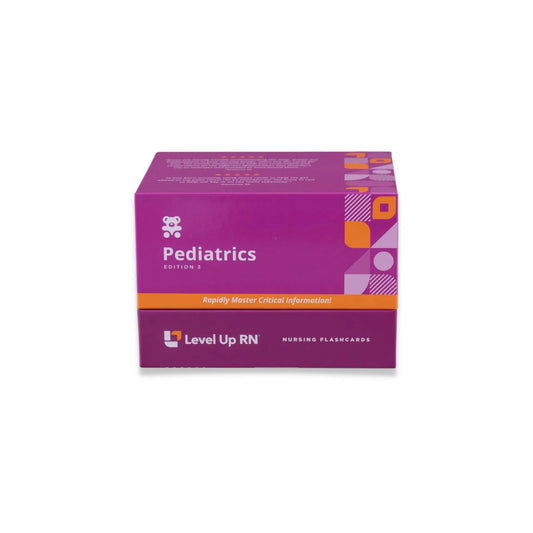Peds, part 14: Respiratory Disorders - Introduction, Otitis Externa, Otitis Media
Updated: Cathy ParkesCoverage of Pediatric Disorders (i.e. Alterations in health), beginning with the respiratory system. Otitis externa and otitis media, including the pathophysiology, risk factors, signs/symptoms, diagnosis, and treatment of these disorders.
Full Transcript: Peds, part 14: Respiratory Disorders - Introduction, Otitis Externa, Otitis Media
Full Transcript: Peds, part 14: Respiratory Disorders - Introduction, Otitis Externa, Otitis Media
Hi, I'm Cathy, with Level Up RN. Starting in this video, I will be going over alterations in health of the pediatric population. So we will be starting with the respiratory system and I will be following along with our Level Up RN pediatric nursing flashcards. If you don't have that deck, I strongly encourage you to go check it out on our website. leveluprn.com. They're amazing. You do not need to have the flashcards to get value out of this video series. However, if you do have our flashcard deck, then be sure to pay close attention to the bold red text on these cards because those are going to be particularly important concepts and facts for you to know. So in this video, I am going to talk about otitis externa and otitis media and at the end of the video, I'm going to give you guys a little quiz to test your knowledge of some of the key points I'll be covering in this video. So definitely stay tuned for that.
So first up, we have otitis externa, which is inflammation and/or infection of the outer ear. This is differentiated from otitis media, which is inflammation or infection of the middle ear. So the pathophysiology behind this condition is that we have persistent moisture in that ear canal that leads to bacterial or fungal overgrowth. And this leads to inflammation or infection. So risk factors include swimming because swimming will cause that persistent moisture in the ear canal. Also, children between the ages of seven and 14 are at higher risk for this condition. And then foreign object insertion into the ears, such as earbuds can place the child at higher risk for otitis externa. In terms of symptoms, the child may complain of ear pain, they may have swelling, redness, and discharge. Diagnosis of this condition can be done with visual examination of the ear, and then treatment includes the use of otic drops. So these are ear drops. And these drops are typically composed of an antibiotic plus a steroid. So, for example, ciprofloxacin is an antibiotic that is often found in these ear drops along with dexamethasone which is the steroid. So when you are administering ear drops to a child, you want them to lay on their unaffected side. So the affected side will be up. You want to warm the drops to room temperature, instill them into the ear and then have the child lay there for three to five minutes after installation. In terms of prevention of otitis externa, the patient can use a combination solution of isopropyl alcohol and white vinegar. After swimming and after showering. Also, we want to advise our patient to frequently sanitize their earbuds and then always avoid the use of cotton swabs in the ear, because that can lead to eardrum puncture.
Next, let's talk about otitis media, which is a middle ear infection. This infection is usually preceded by an upper respiratory infection that causes congestion and inflammation that ear in the ear. And this leads to the obstruction of the station tube and the accumulation of fluid in that middle ear. Risk factors include cigarette smoke exposure. So that's a key risk factor with this condition. In addition, otitis media is more common with younger children between the ages of six months and 24 months. Signs and symptoms can include drainage from the affected ear. The child may also pull on their ear. They may have a fever and they may have increased irritability and crying, and they may not be sleeping so well at night as well. In terms of diagnosis, we can use an otoscope and when we visualize the patient's tympanic membrane, it may be red and bulging. Treatment includes pain relievers such as acetaminophen and NSAIDs, as well as antibiotics to treat the infection. For children who have recurrent middle ear infections, which is something I had a lot as a kid, then they may need a myringotomy, which is where we placed ear tubes. So these tubes help to allow for fluid to drain out of the middle ear, which in turn helps to prevent infection.
All right, it's time for quiz. I have three questions for you. First question, swimming is a key risk factor for what type of ear disorder? If you said otitis externa, you are correct. Question number two, what is the surgical intervention for recurrent otitis media? The answer is myringotomy question number three. Cigarette smoke exposure is a key risk factor for otitis media. True or false? The answer is true. All right. I hope you did well on that quiz, and I hope you found this video to be helpful. If so, be sure to like this video and definitely leave me a comment. Take care and good luck with studying.


